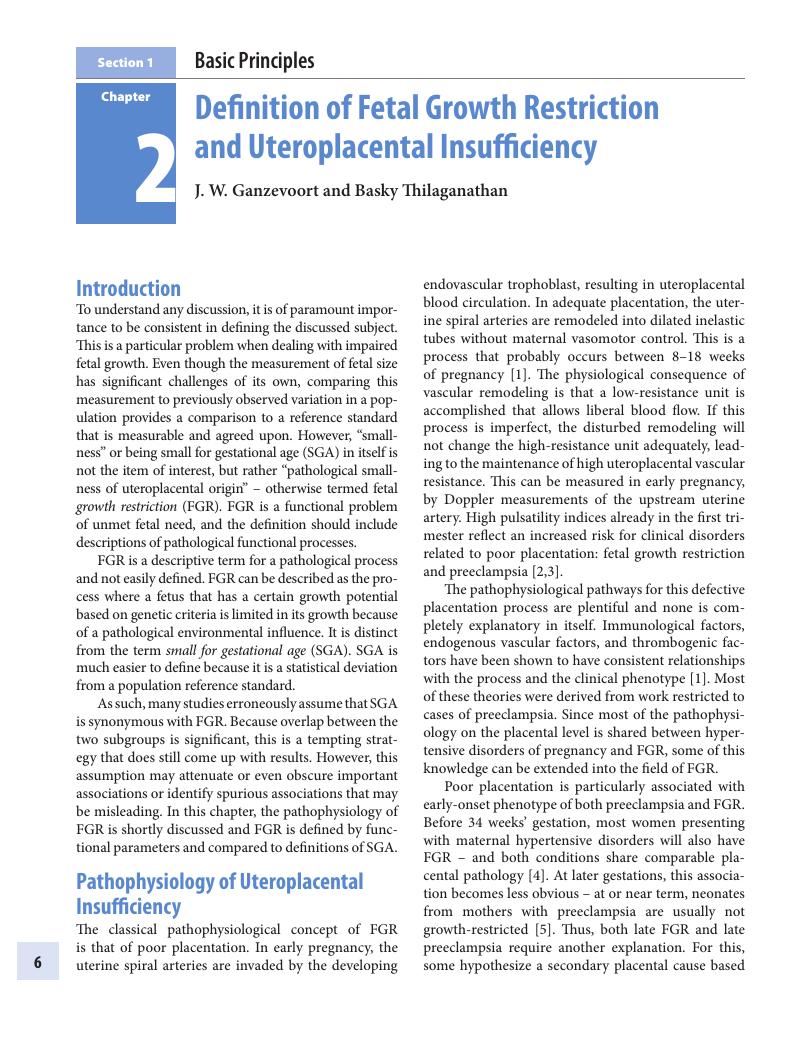Book contents
- Placental–Fetal Growth Restriction
- Placental–Fetal Growth Restriction
- Copyright page
- Contents
- Contributors
- Foreword
- Preface
- Glossary and Commonly Used Abbreviations
- Section 1 Basic Principles
- Chapter 1 What Is Optimal Fetal Growth?
- Chapter 2 Definition of Fetal Growth Restriction and Uteroplacental Insufficiency
- Chapter 3 Differential Diagnosis of Fetal Growth Restriction
- Chapter 4 Fetal Growth Restriction and Hypertensive Diseases of Pregnancy
- Chapter 5 Assisted Reproduction Techniques (ART) and Fetal Growth
- Chapter 6 Fetal Growth Restriction Study Design and Outcomes
- Chapter 7 Analysis of National and International Guidelines on Placental–Fetal Growth Restriction
- Section 2 Maternal Cardiovascular Characteristics and the Placenta
- Section 3 Screening for Placental–Fetal Growth Restriction
- Section 4 Prophylaxis and Treatment
- Section 5 Characteristics of Fetal Growth Restriction
- Section 6 Management of Fetal Growth Restriction
- Section 7 Postnatal Aspects of Fetal Growth Restriction
- Index
- References
Chapter 2 - Definition of Fetal Growth Restriction and Uteroplacental Insufficiency
from Section 1 - Basic Principles
Published online by Cambridge University Press: 23 July 2018
- Placental–Fetal Growth Restriction
- Placental–Fetal Growth Restriction
- Copyright page
- Contents
- Contributors
- Foreword
- Preface
- Glossary and Commonly Used Abbreviations
- Section 1 Basic Principles
- Chapter 1 What Is Optimal Fetal Growth?
- Chapter 2 Definition of Fetal Growth Restriction and Uteroplacental Insufficiency
- Chapter 3 Differential Diagnosis of Fetal Growth Restriction
- Chapter 4 Fetal Growth Restriction and Hypertensive Diseases of Pregnancy
- Chapter 5 Assisted Reproduction Techniques (ART) and Fetal Growth
- Chapter 6 Fetal Growth Restriction Study Design and Outcomes
- Chapter 7 Analysis of National and International Guidelines on Placental–Fetal Growth Restriction
- Section 2 Maternal Cardiovascular Characteristics and the Placenta
- Section 3 Screening for Placental–Fetal Growth Restriction
- Section 4 Prophylaxis and Treatment
- Section 5 Characteristics of Fetal Growth Restriction
- Section 6 Management of Fetal Growth Restriction
- Section 7 Postnatal Aspects of Fetal Growth Restriction
- Index
- References
Summary

- Type
- Chapter
- Information
- Placental-Fetal Growth Restriction , pp. 6 - 13Publisher: Cambridge University PressPrint publication year: 2018



